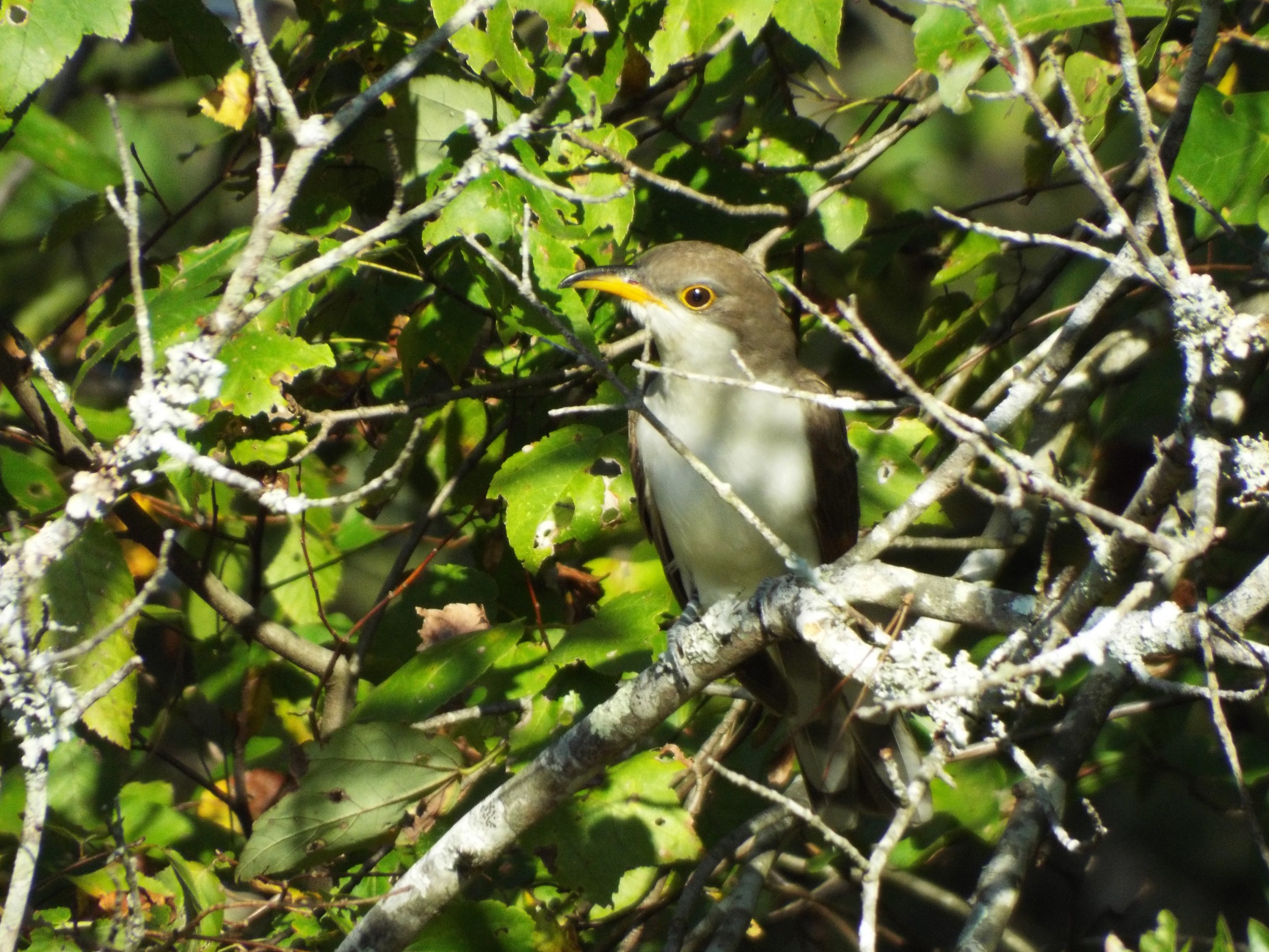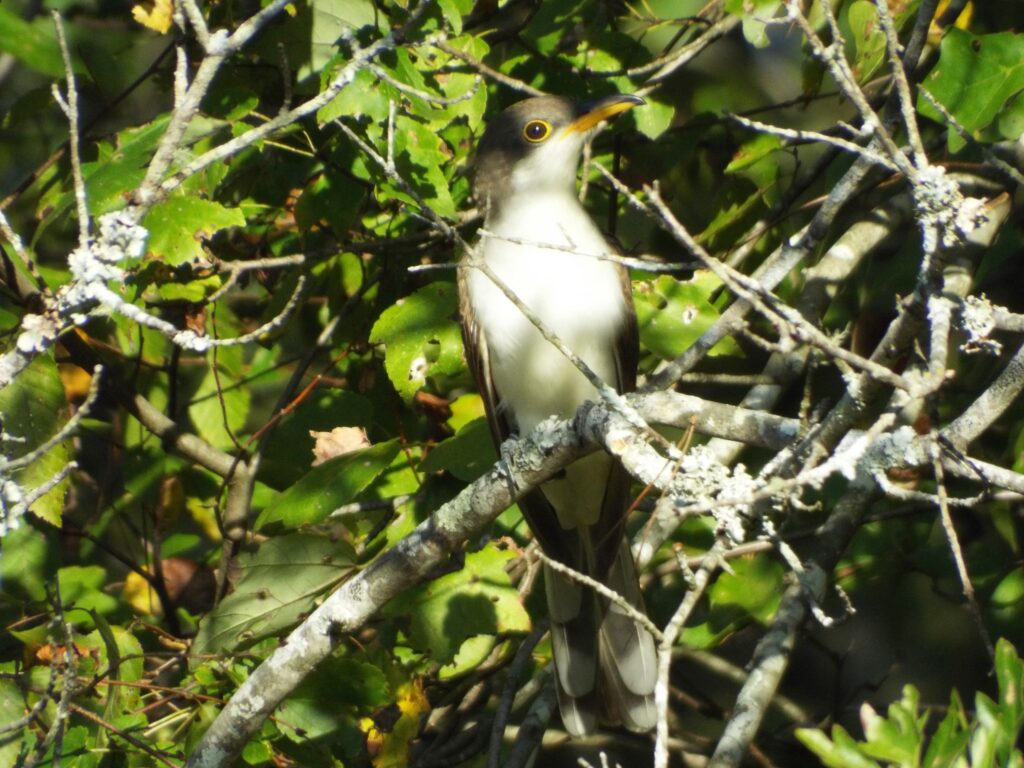

This week for Flora and Fauna Friday we have a lemon-lipped homewrecker of a bird, the Yellow-billed Cuckoo (Coccyzus americanus).
The Yellow-billed Cuckoo, colloquially known as the Rain-Crow, is a large and peculiar bird. It, along with its much less Lowcountry common cousin the Black-billed Cuckoo (C. erythropthalmus), are the only two members of their order found widely within the eastern United States. The Yellow-billed Cuckoo has a marble-white belly, brown-gray back, rusty-brown wing tips, and a long tail that’s brown above and black below but broken up beneath with three pairs of white blobs. The brown of their back flows up over the head to meet the white of the belly just below their black eye, which is sometimes ringed in yellow. Their namesake beak is heavy and two-toned, black above and lemon-yellow below. The song of the Rain-Crow is quite distinctive, albeit a bit bland. They can be heard from nearly a mile off, letting loose a monotonous series of dry but resonant “kuh”s, like something between a cough and a wheeze. Their call is just as recognizable, a persistent rising string of sharp knocks, sometimes ending with a slew of brief, percussive rolls.
Yellow-billed Cuckoos are summer residents, flying in in late spring to breed and then departing in fall. Cuckoos build nests and lay eggs like any other bird. However, they’re also brood parasites, meaning they’ll lay eggs in the nests of other birds but, unlike the Brown-headed Cowbird, they’re not obligated to do so. Generally, they parasitize the nests of large songbird species but will also parasitize other Cuckoos. Yet, Yellow-billed Cuckoos rarely do so unless food is particularly abundant in their territory. In order to capitalize on the brood parasitism strategy, Cuckoo eggs are also extremely fast maturing. This allows their young to get a head start when laid in another species’ nest. To counteract this rapid maturation when raising their own young, they lay their eggs asynchronously, allowing eggs to hatch several days apart and lessening the burden on the adults who would otherwise need to feed all those hungry mouths at once. Yellow-billed Cuckoos are primarily insectivorous and spend their days patrolling hardwood forests looking for food. They are the number one predator of Fall Webworms and Tent Caterpillars, using their strong bill to tear into those silken fortresses and gorge themselves on the caterpillars inside. They also hunt cicadas, katydids, and other such noisy nuggets of summer. Cuckoos will also feed on various fruits when available.